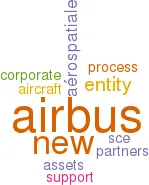Airbus's SCE conversion: cutting the Gordian knot
January 1999


The transformation of Airbus into a Single Corporate Entity (SCE) has been described as a “complex and revolutionary” process — and that was before the French partner, Aérospatiale, issued its demand for 50% ownership in the new entity following the proposed BAe/DASA amalgamation (see Aviation Strategy, December 1998). But does the SCE process really have to be “complex and revolutionary”?
The simple solution would be for Airbus to be reconstituted as a corporate entity — with public transparent accounting — that would be responsible for assembling and marketing Airbus aircraft, while Aérospatiale, BAe, DASA and CASA would act as subcontractors. Airbus already acts as the single point of contact with the customers and is solely responsible for revenue collection. The key change would be to have a corporate Airbus contract with the various subcontractor manufacturers rather than simply remitting the sales proceeds, minus direct costs, to the partner–owners on a pro–rata basis.
Initially this would probably involve little change in the production process in terms of the supplier relationships. The partners would retain their assets and contract to sell their products, including aircraft assembly (very important in the case of Aérospatiale), to Airbus. As new programmes are developed Airbus would be free to select the most appropriate supplier for any component, regardless of the supplier’s position as a shareholder in the new enterprise. No large aircraft are produced entirely in–house these days; on the contrary the modal approach adopted by Airbus — ironically for political reasons — has proved to be very efficient.
“Corporatising” Airbus in this manner would resolve the extremely difficult question of how to allocate the Airbus–related assets of the partners to the new entity. Aérospatiale, BAe, DASA and CASA would continue to own their own facilities, pay their own workers and in turn would be paid by Airbus for their own output.
If a partner desired to transfer some or even all of its own assets to Airbus, this could be handled as a business transaction, with the financial markets providing debt or equity as required. It is possible that the new Airbus could choose to acquire most of the production capability for its products if it so wanted, but it would not be obliged to do so — and could well prefer to retain maximum flexibility by not investing in industrial infrastructure.
Government support?
On the thorny issue of government support, direct development aid as agreed to in the 1992 US–EU bilateral agreement would be relatively easy to administer and monitor. The agreed–upon one–third development support could be provided directly to the new Airbus which could then use the funding as it saw fit, accounted for on a contractual basis. In a market–driven environment Airbus could choose to allocate some of this funding to companies in Asia, the US or elsewhere — wherever it could best be utilised.
With regard to the liabilities incurred prior to the formation of the new entity, including repayment of launch aid, royalties, levies, etc, the EC should require that these be identified and either transferred to the new entity’s balance sheet or retained by the partners on their own books as a condition for approving the new Airbus. (Given the EC’s intervention in the Boeing–McDonnell Douglas merger, the EC will certainly have to rule on this new company.)
It would seem logical that the privately owned British and German participants would be relatively eager to proceed down this route, and it is possible that that the French treasury would have similar leanings, given its current spending needs.